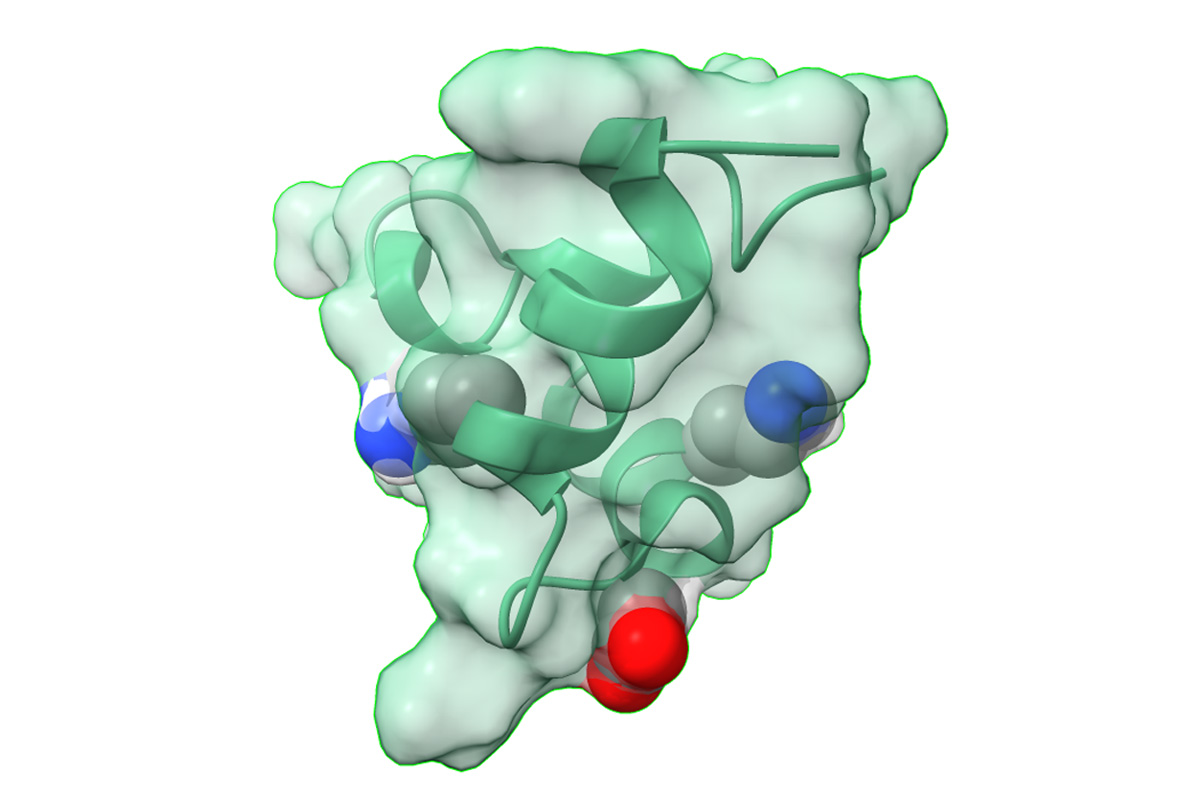
Scientists Map Key Part of SARS-CoV-2 Spike Protein
September 6, 2023| |
A new study led by molecular biologist Steven Van Doren, a scientist at the University of Missouri College of Agriculture, Food and Natural Resources, has uncovered the unexpected actions of a key player in how the SARS-CoV-2 coronavirus infects humans—a discovery that could guide further vaccine development.
Van Doren and his team studied the fusion peptide, an important feature of the coronavirus spike protein that serves to bind the virus with the human cell, an essential step in the course of infection. The research team found that the fusion peptide plays a more invasive role in fusing the virus to the cell than previously thought, a significant discovery in understanding how infection occurs.
According to Van Doren, the fusion peptide is the most preserved part of the whole viral spike. “Throughout the evolution of this virus, the fusion peptide endured despite all the mutations and variants that we kept on hearing about in the news," he added. Van Doren also said that the fusion peptide never changed much and stayed as a constant feature on the virus spike because it is critically important for infection for it to be modified.
Aside from guiding future vaccine development, this discovery has potential applications in creating a novel strategy to penetrate cells.
For more details, read the news release in Show Me Mizzou.
| |
You might also like:
- CRISPR Helped to Successfully Prevent and Treat COVID-19 Infections
- Researchers Shed New Light on the Molecular Detail of COVID-19
- Unraveling Coronavirus Structure for Effective Vaccine and Medication
Biotech Updates is a weekly newsletter of ISAAA, a not-for-profit organization. It is distributed for free to over 22,000 subscribers worldwide to inform them about the key developments in biosciences, especially in biotechnology. Your support will help us in our mission to feed the world with knowledge. You can help by donating as little as $10.
-
See more articles:
-
Plant
- Stakeholders Support Commercial Cultivation of GM Cowpea in Ghana
- Philippines Approves Bt Cotton for Commercial Propagation
- COGEM Concludes Stacked GM Cotton T304-40 x GHB119 x COT102 Does Not Pose an Environmental Risk in the Netherlands
- Best-bet Communication Approaches on New Breeding Technologies Proposed at ABBC2023
-
Animal
- ISAAA and DA-FBC Educated Stakeholders About Mudfish Spawning Technology
-
Food
- Biotech Company Launches Plant-Based Casein
- Study Highlights Impact of GE Crops in Global Agri Output
-
Health
- Scientists Map Key Part of SARS-CoV-2 Spike Protein
- Researchers Develop PCR-based Blood Diagnostic Test for Parkinson's Disease
-
Read the latest: - Biotech Updates (December 17, 2025)
- Gene Editing Supplement (December 17, 2025)
- Gene Drive Supplement (February 22, 2023)
-
Subscribe to BU: - Share
- Tweet

